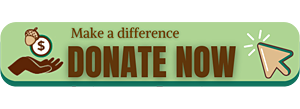During tax season, fraudsters use the latest strategies to steal identities. With the tax filing season in full swing, taxpayers need to remain vigilant for strategies that may involve text messages, emails, phone calls or potential unemployment fraud.
The Internal Revenue Service (IRS) notes, “With filing season underway, this is a prime period for identity thieves to hit people with realistic-looking emails and texts about their tax returns and refunds. Watching out for these common scams can keep people from becoming victims of identity theft and protect their sensitive personal information that can be used to file tax returns and steal refunds."
- Text Message Scams— There has been an uptick in text messages from senders that claim to represent the IRS. These fraudulent messages often include links to bogus websites that purport to be the IRS. The IRS emphasizes it does not use text messages other than the IRS Secure Access service. The IRS also will not send direct messages through social media platforms.
If you receive a text message that claims to be from the IRS, you should take a screen shot and send it toThis email address is being protected from spambots. You need JavaScript enabled to view it. . With the screenshot, include the date and time you received the text message and your phone number. You can take a screenshot on an iPhone by simultaneously pressing and releasing the side button and volume button. On other smartphone models, you may press at the same time the side button and home button or the top button and home button. The screenshot may then be accessed through your phone’s photos app and emailed toThis email address is being protected from spambots. You need JavaScript enabled to view it. .
- Unemployment Fraud— There is a surge in efforts by organized crime rings to steal identities and file fraudulent unemployment claims with state agencies. Your state office will then issue IRS Form 1099-G, Certain Government Payments to the recipient and the IRS. If you receive a fraudulent or inaccurate Form 1099-G, you should report it to the state agency and obtain a corrected Form 1099-G. For information on unemployment fraud and to report an incident, go to DOL.gov/fraud. If you receive any communication from a state agency about an unemployment claim that you did not file or a notice from your employer about an unemployment claim that is improper, you should also report it.
- Email Phishing Scams— The IRS emphasizes that it does not contact taxpayers through email to request personal or financial information. If you receive an unsolicited email, do not click on any links in the email. Send the email as an attachment to
This email address is being protected from spambots. You need JavaScript enabled to view it. . The "Report Phishing and Online Scams" webpage at IRS.gov provides additional information.
- Phone Scams— The IRS notes it does not leave urgent or threatening messages on your phone or voicemail. Scammers will often threaten victims with arrest, deportation or revocation of a driver's license. It is possible to "spoof" caller ID numbers. The scammer may attempt to spoof the caller ID number of a sheriff's office, department of motor vehicles or federal agency. The IRS emphasizes it will never call and demand payment through a prepaid debit card, gift card or wire transfer. It will also not ask for a credit or debit card over the phone.
If you receive a threatening call, hang up the phone. You can report the caller ID and callback number onThis email address is being protected from spambots. You need JavaScript enabled to view it. . You also may report the call on FTC.gov and note "IRS Telephone Scam" on your report.
If you owe tax or think you might have a tax bill due to the IRS, you should hang up the phone. You can create an online account on IRS.gov and review your information. There may be a phone number on a billing notice from the IRS or the general IRS number is 800-829-1040.
If you are a victim of identity theft and a fraudster has used your Social Security number to file and claim a fraudulent refund, you may be contacted by the IRS. You should immediately respond to any IRS notice and call the listed number.
You may file IRS Form 14039, Identity Theft Affidavit. If you are a victim of identity theft, you still must file and pay taxes. Many individuals use a paper form to pay their tax in this circumstance.
Editor's Note: IRS tax filing season always causes fraudsters to intensify their efforts. Taxpayers should be familiar with the principal ways scammers attempt to steal identities and file fraudulent returns.





